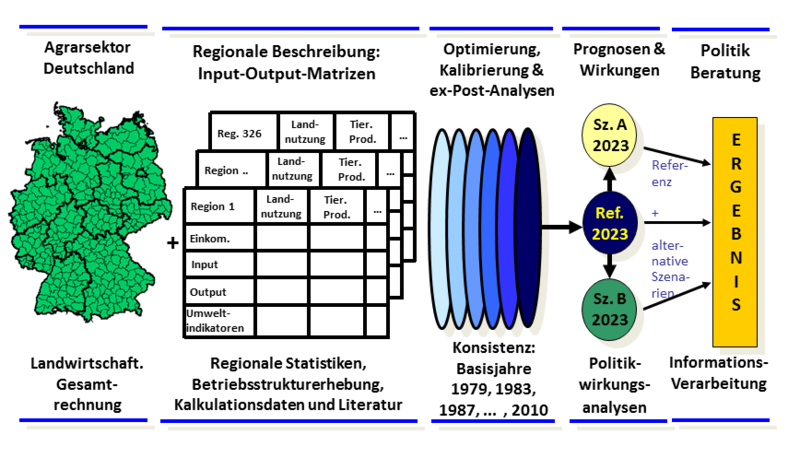Type
Mathematical programming model with a non-linear objective function
Main fields of application
Analyses of policy impacts of the CAP, analyses of measures to implement the EU water framework directive, the Kyoto-Protocol or renewable energy, adjustments of global (climate) change, input-output analyses for the environmental accounts
Main partners
Federal Ministry for Food, Agriculture and Consumer Protection, University of Bonn, Potsdam Institute for Climate Impact Research (Potsdam), Research Centre Jülich, Helmholtz Centre of Environmental Research UFZ (Leipzig)
Specifics
- Consistency to national agriculture accounts, encompasses total agricultural production, total input use, and agricultural income
- calculation of agro-environmental indicators (e.g. nutrient balances, green house gas emissions) consistent to report obligations
- coupling with different model types for example general computable equilibrium models and natural science models
Data base
National accounts of agriculture, farm structure survey, calculation data, calibrated base years 1979, 1983, 1987, 1991, 1995, 1999, 2003 (2007 in preparation)
Regions / Countries (EU)
Germany, 326 model regions (NUTS III / counties)
Sectors and differentiation of production
Primary production of the agricultural sector / 31 crop and 16 livestock activities
Policy instruments
Production quotas, direct payments, decoupling, set-aside, stocking rate limits, minimum land use requirements, agro-environmental requirements
Trade
Inter regional transports (e.g. manure), quotas, set-aside obligations, young animals
Endogenous variables
Supply quantities and income on regional and sector scale. Trade (quotas, manure, set-aside) between regions
Exogenous variables
Product prices, policy variables (e.g. area payments, quotas, production obligations), projection of technical coefficients
Software
FORTRAN (planed: change to GAMS)







